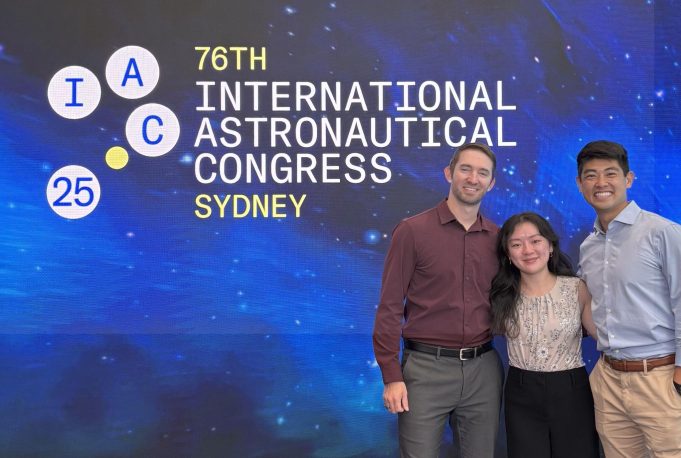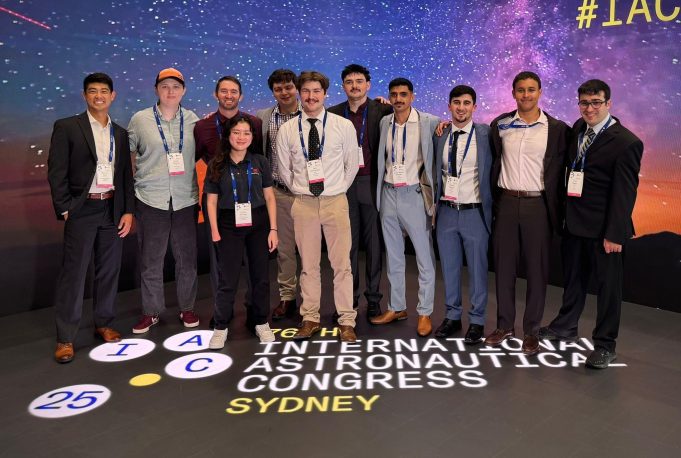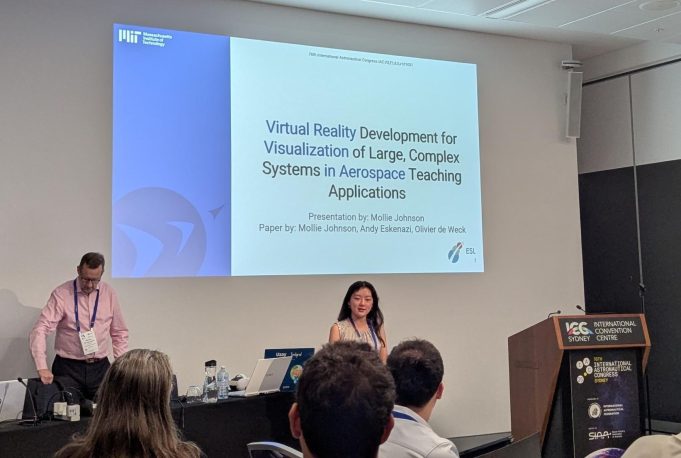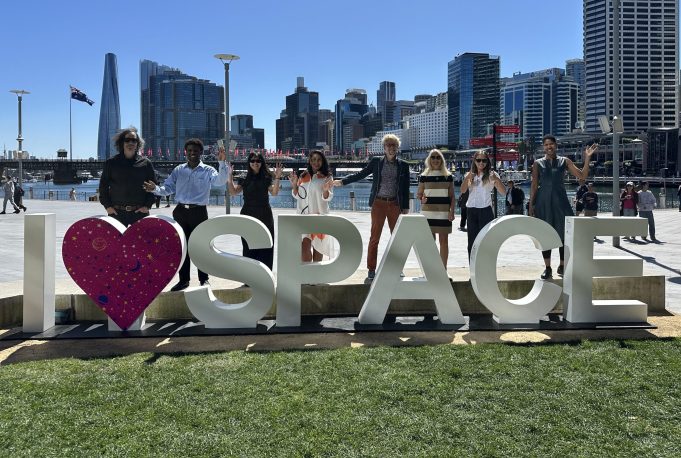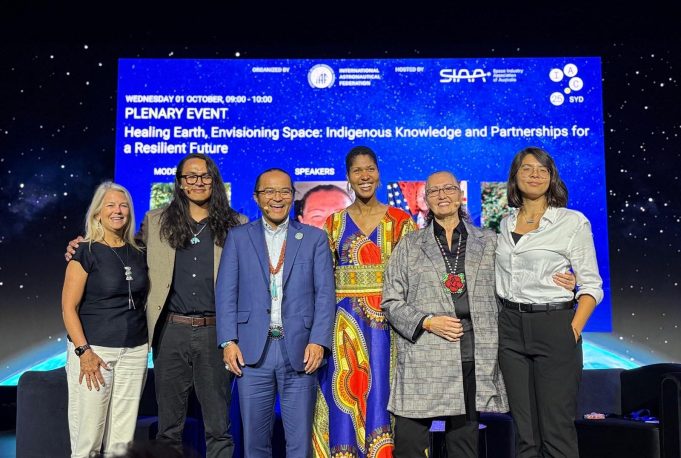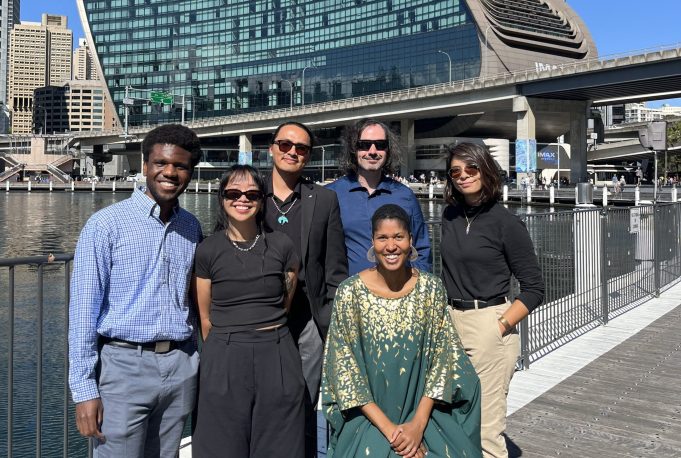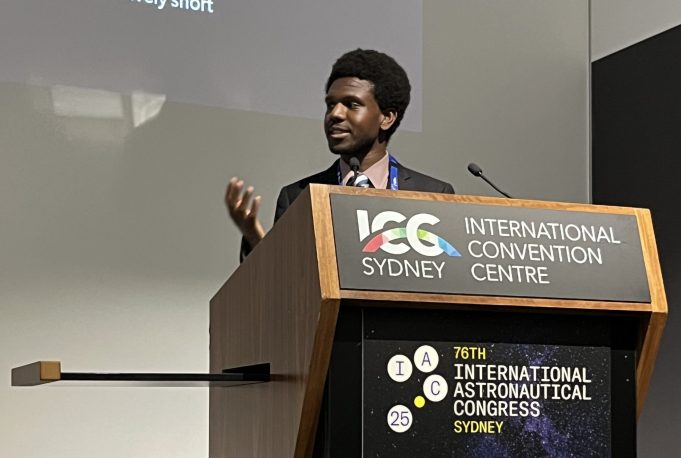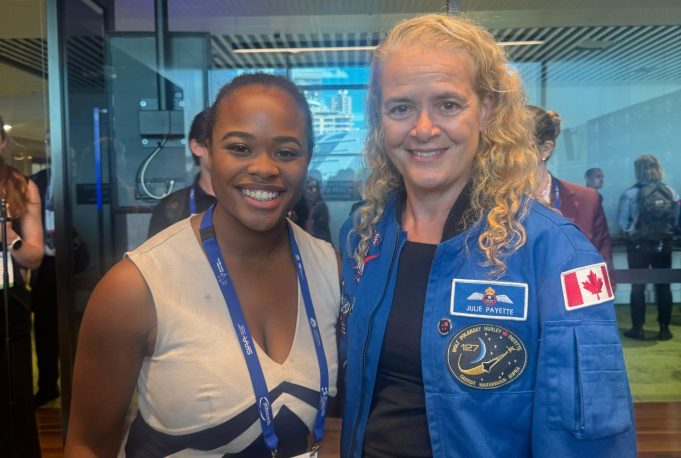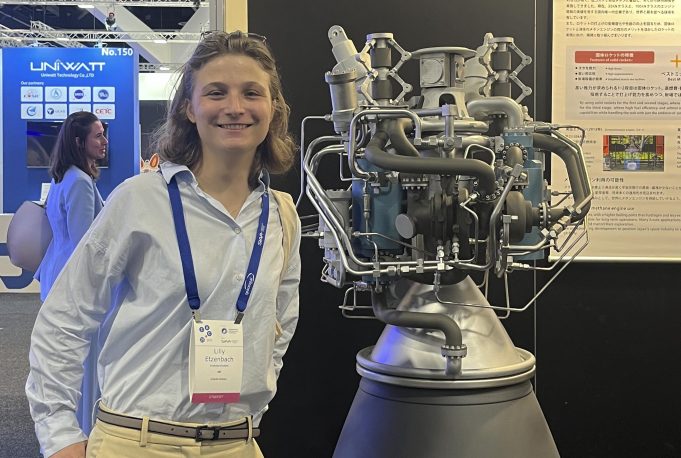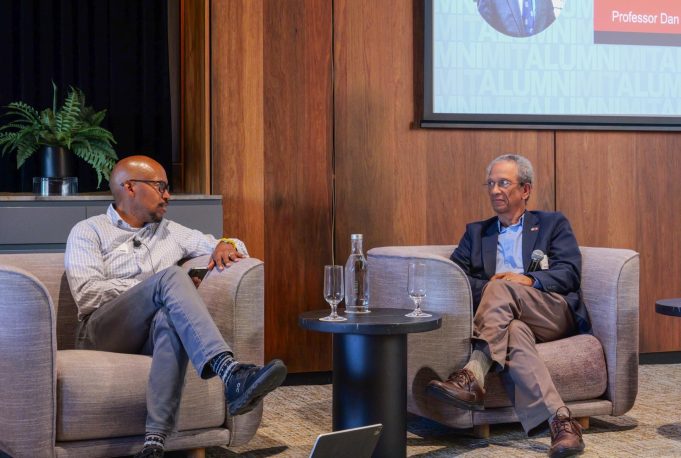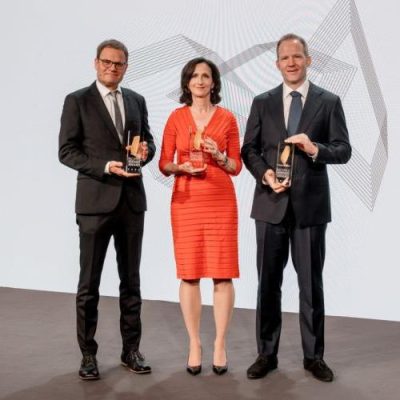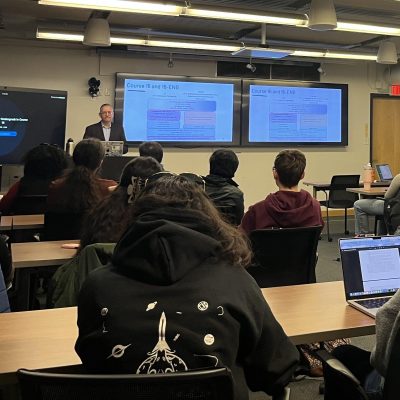AeroAstro shares research and global connections at IAC Sydney
AeroAstro students and faculty were out in force at this year’s International Astronautical Congress (IAC) in Sydney, Australia, organized by the International Astronautical Federation. The theme of this year’s conference was “Sustainable Space: Resilient Earth,” bringing together leaders in the aerospace industry to explore how space technologies can support life on Earth and beyond.
Alvin Harvey ’24, now a postdoctoral researcher in the Space Enabled research group, and Professor Danielle Wood held a plenary session titled “Healing Earth, Envisioning Space: Indigenous Knowledge and Partnerships for a Resilient Future.” The session notably featured Buu Ngyen, President of the Navajo Nation.
Members of Space Enabled also contributed several technical presentations throughout the conference.
Graduate students from the Engineering Systems Laboratory (ESL) gave several presentations at the conference:
Lilly Etzenbach presented two technical papers on advancing sustainable space infrastructure:
- “Designing for Reuse: Technical Challenges and Performance Tradeoffs for Reusable Liquid Propellant Rocket Engines” showcased part of her master’s thesis exploring how engineers can improve rocket engine lifetime while balancing performance and maintenance needs.
- “Modular Waste Recycling and Manufacturing System Architecture for the Moon and Beyond” highlighted MIT’s CERBERUZ team, winners of Phase I of NASA’s LunaRecycle Challenge. This work proposes a lunar recycling system capable of processing complex materials, such as spacecraft insulation foam, to support long-term missions on the Moon.
Mollie Johnson gave two presentations:
- An interactive poster session on a year-long project titled “Mars Advanced Precursor Systems.” This project was a collaboration with the Royal Melbourne Institute of Technology (RMIT) that was originally proposed for the 2025 NASA RASC-AL competition. The project lays out the framework for a multi-decadal program to prepare Mars for human arrival such that astronauts can maximize their surface stay.
- A live demonstration of a framework for using virtual reality to visualize student-designed systems created in aerospace courses. This project was co-authored by grad student Andy Eskenazi (LAE) with the intent of using VR for his “How to CAD Almost Anything” course. Engineering students with no background in VR development can use this VR template to easily import their CAD models of large-scale systems (spacecraft, airplanes, helicopters, etc.) designed in capstone courses.
Ireland Brown presented research on optimizing space mission architecture for profitability, using a lunar in-situ resource utilization (ISRU) system as a case study. During related panels on the developing cislunar economy, Ireland emphasized the importance of commercial sustainability, noting that “One interesting note from the lunar economy panel is that companies are being created both before and after demand exists. Space companies like Vast say demand doesn’t need to be created first, cost needs to be cut first, which draws in demand.”
The ESL also hosted an alumni reunion, and the MIT Tech Connection Down Under event brought together Australia-based MIT alumni. The gathering was organized by R. Robert Wickham ’93, SM ’95, strengthening professional ties in the global aerospace community, and included an interview with Prof. Dan Hastings.
